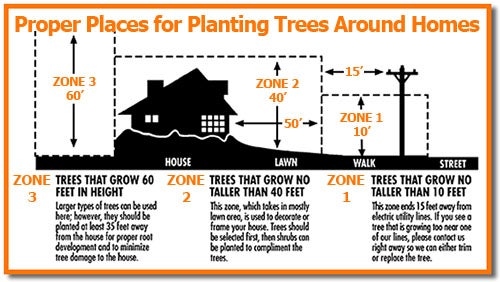Trees & Power Lines Don't Mix
Reliable electric service is a necessity in our daily lives - and can be critical in emergency situations. Unfortunately, trees and reliable electric service are not always compatible.
To manage the coexistence of trees and reliable electricity, Fergus Electric Cooperative, Inc. has a right-of-way maintenance program focused on electric safety and reliability.
Clearance Standards: Many species of trees can grow 15 feet or more in a five-year period. Fergus Electric Cooperative's right-of-way maintenance program strives to remove or prune trees to maintain a 30-foot-wide path.
Tree removal: Right-of-way tree removal is a critical component of safety and reliability. During extreme weather events trees fall on power lines, causing outages and very hazardous conditions.
Tree limbs growing close to power lines can even be hazardous on days with modest winds. When branches touch power lines, they can carry electric current to people and animals that contact the tree. This contact can be fatal.
Member Notification: To maintain reliable and safe electric lines, permission to prune is not required. Large trees growing very near or under a power line should be removed. Trees and bushes which restrict access to utility poles should also be removed.
Right Tree, Right Place: Every species of tree has different height, width, and overall spacing needs. When you plant a tree, choose the right tree for the right place. Carefully match your tree selection with site conditions and desired functions. Consider its proximity to other trees, buildings, and utilities (above and below), shade, screen, wildlife cover, etc.
The Montana Department of Conservation suggests there are no "perfect" or "universal" trees. Characteristics that make a tree very desirable for one location could make it unsuitable for another. Many tree problems are the result of improper location or poor species selection for the planting site.
Trees are a long-term investment. The Montana Department of Conservation and Arbor Day Foundation can recommend tree species to fit your needs. Finding the correct tree for any given spot will help you avoid problems in the future.

The illustration is also a useful guide to begin this process. It can help you identify the proper places for planting trees around your home for electric safety, service reliability, plant viability and long-term environmental benefits. Plan ahead and "plant the right tree in the right place."
Learn more at www.arborday.org.
